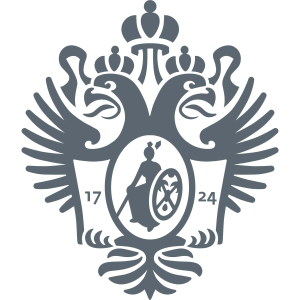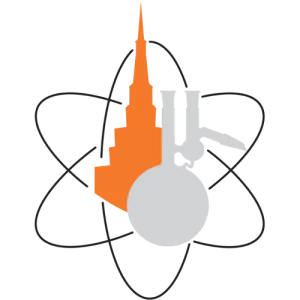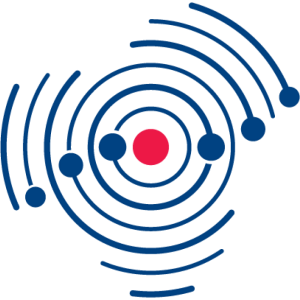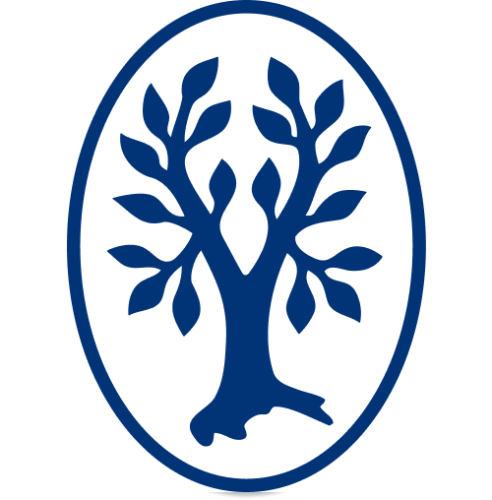Isonitriles as Stereoelectronic Chameleons: The Donor–Acceptor Dichotomy in Radical Additions
Publication type: Journal Article
Publication date: 2018-10-01
scimago Q1
wos Q1
SJR: 5.554
CiteScore: 22.5
Impact factor: 15.6
ISSN: 00027863, 15205126
PubMed ID:
30270623
General Chemistry
Catalysis
Biochemistry
Colloid and Surface Chemistry
Abstract
Radical addition to isonitriles (isocyanides) starts and continues all the way to the transition state (TS) mostly as a simple addition to a polarized π-bond. Only after the TS has been passed, the spin density moves to the α-carbon to form the imidoyl radical, the hallmark intermediate of the 1,1-addition-mediated cascades. Addition of alkyl, aryl, heteroatom-substituted, and heteroatom-centered radicals reveals a number of electronic, supramolecular, and conformational effects potentially useful for the practical control of isonitrile-mediated radical cascade transformations. Addition of alkyl radicals reveals two stereoelectronic preferences. First, the radical attack aligns the incipient C···C bond with the aromatic π-system. Second, one of the C-H/C-C bonds at the radical carbon eclipses the isonitrile N-C bond. Combination of these stereoelectronic preferences with entropic penalty explains why the least exergonic reaction (addition of the t-Bu radical) is also the fastest. Heteroatomic radicals reveal further unusual trends. In particular, the Sn radical addition to the PhNC is much faster than addition of the other group IV radicals, despite forming the weakest bond. This combination of kinetic and thermodynamic properties is ideal for applications in control of radical reactivity via dynamic covalent chemistry and may be responsible for the historically broad utility of Sn radicals ("the tyranny of tin"). In addition to polarity and low steric hindrance, radical attack at the relatively strong π-bond of isonitriles is assisted by "chameleonic" supramolecular interactions of the radical center with both the isonitrile π*-system and lone pair. These interactions are yet another manifestation of supramolecular control of radical chemistry.
Found
Nothing found, try to update filter.
Found
Nothing found, try to update filter.
Top-30
Journals
|
1
2
3
4
5
6
7
8
|
|
|
Journal of Organic Chemistry
8 publications, 9.88%
|
|
|
Organic Letters
7 publications, 8.64%
|
|
|
Angewandte Chemie
6 publications, 7.41%
|
|
|
Angewandte Chemie - International Edition
6 publications, 7.41%
|
|
|
ACS Catalysis
4 publications, 4.94%
|
|
|
Chemistry - A European Journal
4 publications, 4.94%
|
|
|
Chemical Science
4 publications, 4.94%
|
|
|
Advanced Synthesis and Catalysis
3 publications, 3.7%
|
|
|
Organic Chemistry Frontiers
3 publications, 3.7%
|
|
|
Chemical Society Reviews
2 publications, 2.47%
|
|
|
European Journal of Organic Chemistry
2 publications, 2.47%
|
|
|
Physical Chemistry Chemical Physics
2 publications, 2.47%
|
|
|
Chem
2 publications, 2.47%
|
|
|
Inorganic Chemistry Frontiers
1 publication, 1.23%
|
|
|
Chinese Journal of Organic Chemistry
1 publication, 1.23%
|
|
|
Processes
1 publication, 1.23%
|
|
|
Bulletin of the Korean Chemical Society
1 publication, 1.23%
|
|
|
Nature Reviews Chemistry
1 publication, 1.23%
|
|
|
Molecular Catalysis
1 publication, 1.23%
|
|
|
Journal of the American Chemical Society
1 publication, 1.23%
|
|
|
Matter
1 publication, 1.23%
|
|
|
Chinese Chemical Letters
1 publication, 1.23%
|
|
|
Current Opinion in Electrochemistry
1 publication, 1.23%
|
|
|
Journal of Computational Chemistry
1 publication, 1.23%
|
|
|
Journal of Heterocyclic Chemistry
1 publication, 1.23%
|
|
|
Journal of Physical Chemistry Letters
1 publication, 1.23%
|
|
|
ACS Combinatorial Science
1 publication, 1.23%
|
|
|
Green Chemistry
1 publication, 1.23%
|
|
|
Organic and Biomolecular Chemistry
1 publication, 1.23%
|
|
|
Applied Organometallic Chemistry
1 publication, 1.23%
|
|
|
1
2
3
4
5
6
7
8
|
Publishers
|
5
10
15
20
25
30
|
|
|
Wiley
26 publications, 32.1%
|
|
|
American Chemical Society (ACS)
23 publications, 28.4%
|
|
|
Royal Society of Chemistry (RSC)
14 publications, 17.28%
|
|
|
Elsevier
8 publications, 9.88%
|
|
|
Springer Nature
3 publications, 3.7%
|
|
|
MDPI
2 publications, 2.47%
|
|
|
Shanghai Institute of Organic Chemistry
1 publication, 1.23%
|
|
|
Beilstein-Institut
1 publication, 1.23%
|
|
|
Pleiades Publishing
1 publication, 1.23%
|
|
|
The Russian Academy of Sciences
1 publication, 1.23%
|
|
|
Georg Thieme Verlag KG
1 publication, 1.23%
|
|
|
5
10
15
20
25
30
|
- We do not take into account publications without a DOI.
- Statistics recalculated weekly.
Are you a researcher?
Create a profile to get free access to personal recommendations for colleagues and new articles.
Metrics
81
Total citations:
81
Citations from 2025:
12
(14.81%)
Cite this
GOST |
RIS |
BibTex |
MLA
Cite this
GOST
Copy
Gomes G. D. P. et al. Isonitriles as Stereoelectronic Chameleons: The Donor–Acceptor Dichotomy in Radical Additions // Journal of the American Chemical Society. 2018. Vol. 140. No. 43. pp. 14272-14288.
GOST all authors (up to 50)
Copy
Gomes G. D. P., Loginova Y., Vatsadze S. Z., Alabugin I. V. Isonitriles as Stereoelectronic Chameleons: The Donor–Acceptor Dichotomy in Radical Additions // Journal of the American Chemical Society. 2018. Vol. 140. No. 43. pp. 14272-14288.
Cite this
RIS
Copy
TY - JOUR
DO - 10.1021/jacs.8b08513
UR - https://doi.org/10.1021/jacs.8b08513
TI - Isonitriles as Stereoelectronic Chameleons: The Donor–Acceptor Dichotomy in Radical Additions
T2 - Journal of the American Chemical Society
AU - Gomes, Gabriel Dos Passos
AU - Loginova, Yulia
AU - Vatsadze, Sergey Z.
AU - Alabugin, Igor V.
PY - 2018
DA - 2018/10/01
PB - American Chemical Society (ACS)
SP - 14272-14288
IS - 43
VL - 140
PMID - 30270623
SN - 0002-7863
SN - 1520-5126
ER -
Cite this
BibTex (up to 50 authors)
Copy
@article{2018_Gomes,
author = {Gabriel Dos Passos Gomes and Yulia Loginova and Sergey Z. Vatsadze and Igor V. Alabugin},
title = {Isonitriles as Stereoelectronic Chameleons: The Donor–Acceptor Dichotomy in Radical Additions},
journal = {Journal of the American Chemical Society},
year = {2018},
volume = {140},
publisher = {American Chemical Society (ACS)},
month = {oct},
url = {https://doi.org/10.1021/jacs.8b08513},
number = {43},
pages = {14272--14288},
doi = {10.1021/jacs.8b08513}
}
Cite this
MLA
Copy
Gomes, Gabriel Dos Passos, et al. “Isonitriles as Stereoelectronic Chameleons: The Donor–Acceptor Dichotomy in Radical Additions.” Journal of the American Chemical Society, vol. 140, no. 43, Oct. 2018, pp. 14272-14288. https://doi.org/10.1021/jacs.8b08513.




















